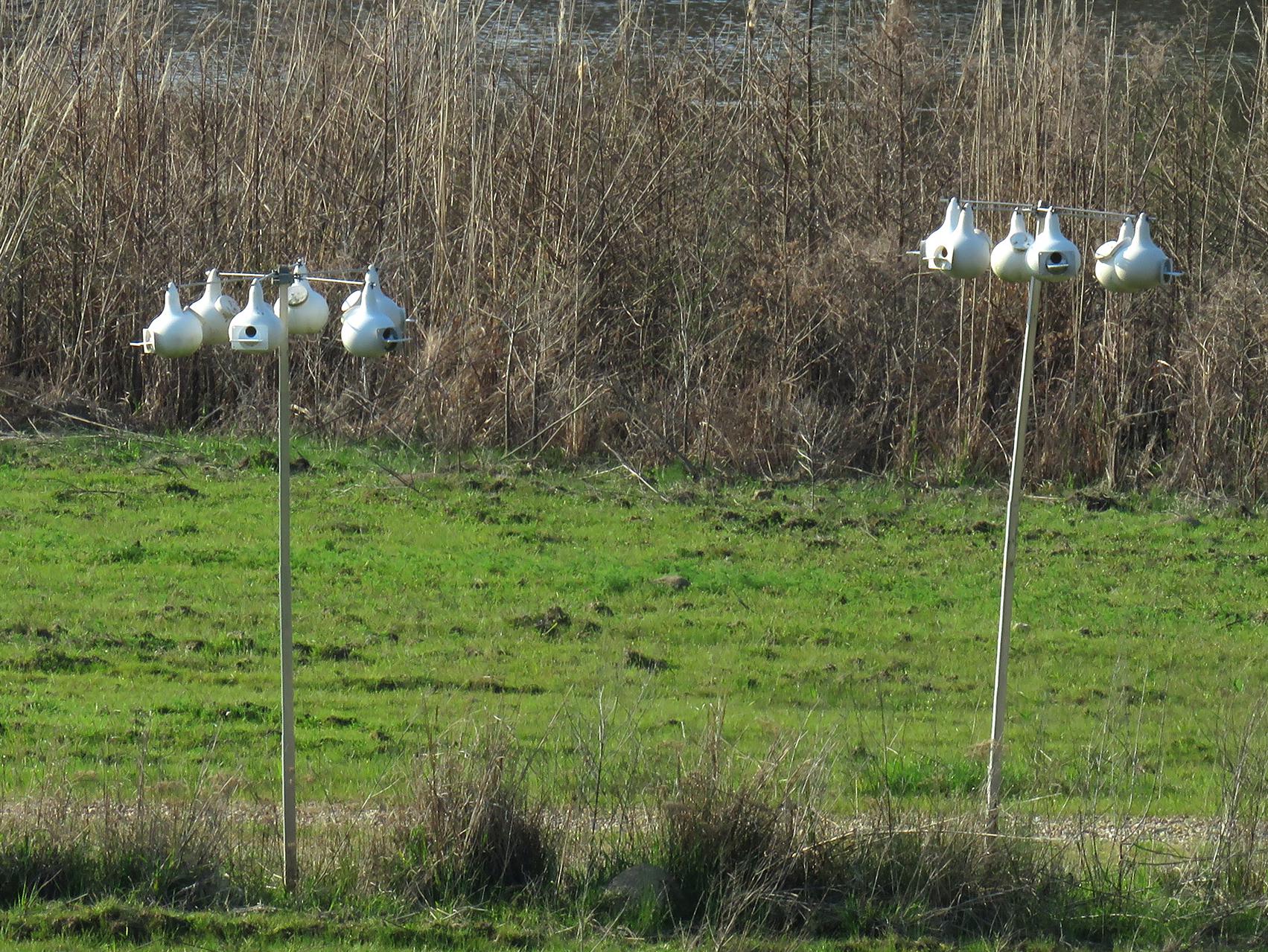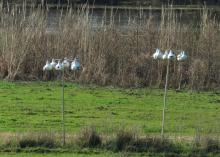Information Possibly Outdated
The information presented on this page was originally released on March 24, 2017. It may not be outdated, but please search our site for more current information. If you plan to quote or reference this information in a publication, please check with the Extension specialist or author before proceeding.
Spring is the time for purple martin houses
RAYMOND, Miss. -- The purple martin is one of the most appreciated and desired birds in the state. It is a summer resident found wherever multi-celled or multi-roomed housing is available.
While they lack the notoriety of the colorful and acrobatic hummingbird, purple martins are by far the most beneficial of the backyard birds. One purple martin can consume thousands of mosquitoes in a single day. Since they are heavily dependent on humans for their shelter, purple martins seem to enjoy being around people, as well.
Purple martins winter in South America and come to nest in North America. They arrive at varying times starting as early as January. However, arrival is usually in late February or early March. The first arrivals are males. They establish themselves at old nest houses before the females arrive.
The use of artificial nesting areas is an old practice. Choctaw and Chickasaw Indians have put up gourds for use by purple martins for hundreds of years. Using gourds is still a common practice in Mississippi. Martin houses are now made of wood, metal or plastic and placed on poles 15 to 20 feet above the ground. Color of the house makes little difference to the martins, but white is recommended to keep it cooler.
Erect the houses as the martins return. Otherwise, sparrows and starlings take over and will keep martins out. Martins often return to the same nesting site they had the previous year.
Nest-building probably does not begin until April. Martins typically lay eggs in May, usually in clutches of four or five. Female martins are primarily involved in incubation. Both parents care for and feed the young, which remain in the nest from 24 to 28 days. Under favorable conditions, the parents raise two broods each year. The birds leave for their wintering grounds in mid- to late September.
For best results, place martin houses in the middle of open areas. They should not be near large trees or buildings. There is no sure way of attracting martins, but they might adopt a properly built house in a good location the first year. Chances are best if there are other established colonies within a mile or so. Expect a few house sparrows or starlings to move in. Destroy the nests of these unwanted species. If possible, close the entrances to the apartments through the winter and open them only when the martins return. This tactic will help to keep the sparrows and starlings out.
Keep the paint on your martin house in good condition. Take martin houses down each year to clean them out and lightly dust the apartments with sulfur to help control mites that infect the birds.

Editor’s Note: Extension Outdoors is a column authored by several different experts in the Mississippi State University Extension Service.





